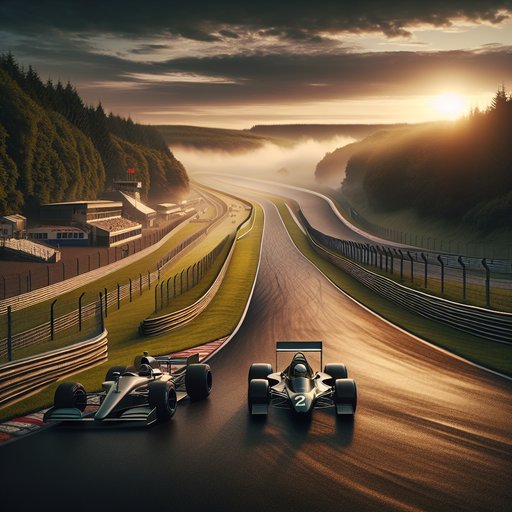
Spa-Francorchamps is more than a venue on the Formula 1 calendar; it is a living archive of how grand prix racing has grown up. Carved through Belgium’s Ardennes forests, the circuit has tested bravery, accelerated safety thinking, and rewarded technical ingenuity for nearly a century. From its fearsome road-course origins to its sophisticated modern incarnation, Spa has remained a place where drivers measure themselves and engineers validate ideas under real stress. Its story threads through motorsport’s most consequential debates—speed versus safety, spectacle versus sustainability—and still produces the kind of racing that reveals who and what is truly fast.
Examining Spa-Francorchamps matters because it shows how a circuit can shape the direction of the sport itself. As cars found unprecedented speed, Spa’s combination of distance, elevation, and weather repeatedly forced the industry to confront limits and adapt. Innovations in safety barriers, circuit design, aerodynamics, tyres, and power units were not abstract exercises, but practical solutions to challenges Spa made impossible to ignore. In this sense, the track is a catalyst for evolution rather than a backdrop for it.
The circuit began as a public-road triangle linking Francorchamps, Malmedy, and Stavelot, a layout that privileged courage and mechanical endurance as much as pure speed. Its signature features—long straights, blind crests, and the ruthless Masta Kink—turned the Belgian Grand Prix into a high-speed trial by ordeal in the mid-20th century. The early world championship era embedded Spa in Formula 1’s identity, but the price of speed on unprotected roads soon proved unacceptable. Drivers, promoters, and governing bodies faced a clear question: how to preserve Spa’s character while finally respecting modern safety standards.
The answer took time and resolve. After a series of serious accidents in the 1960s and growing driver resistance, Formula 1 stepped away from the old road course and did not return until a redesigned, shortened circuit was built. The new layout, introduced for top-line international competition in the late 1970s and welcomed back by F1 in the early 1980s, kept the sweeping rhythm but replaced hedgerows and houses with run-offs and modern barriers. Spa had evolved from a perilous road race into a permanent facility without betraying its essence.
The lesson—that heritage can be retained while safety advances—is now foundational across top-tier motorsport. Even in its modern form, Spa’s terrain imposes a unique technical and psychological test. The compression at Eau Rouge and the blind, uphill flick of Raidillon load the car with enormous vertical and lateral forces, demanding absolute faith in the chassis and aero map. Pouhon’s long, fast arc and the once-flat Blanchimont reveal the balance window with brutal honesty; a setup that works elsewhere can be exposed here in a single, committed attempt.
For drivers, confidence must be earned incrementally, because the penalty for imprecision at these speeds is immediate and expensive. Spa’s microclimate adds an extra layer of complexity that has repeatedly written racing history. Rain can soak the high ground while the pit straight stays dry, splitting the field’s tyre choices and rewarding those who read the sky as shrewdly as they read the data. The 1998 Belgian Grand Prix’s huge first-lap multi-car accident and the subsequent Jordan one-two underlined both the risks and the opportunities that variable conditions create.
From Mika Häkkinen’s decisive 2000 overtake while threading between a rival and a backmarker, to Lewis Hamilton’s late-race penalty after a chicane cut in 2008, and the curtailed 2021 event that highlighted modern safety and visibility thresholds, Spa’s weather can reorder a weekend in minutes. For contemporary teams, Spa is a proving ground for efficiency as much as courage. The lap stitches together near-flat-out sectors with long, loaded corners, forcing a compromise between drag reduction on the Kemmel Straight and stability through the middle sector. Power unit deployment maps, brake-by-wire tuning, and differential settings are meticulously planned to convert elevation changes and compressions into lap time without over-stressing tyres.
Since the return of ground-effect underbodies, ride heights and plank wear are scrutinized at Eau Rouge-Raidillon, where porpoising risk and bottoming must be controlled without sacrificing the momentum modern aero demands. The circuit’s safety evolution has continued in parallel with the performance arms race. Chicanes and entries have been refined over the years, most visibly around the Bus Stop and the pit complex, to improve flow and reduce accident exposure. After high-profile incidents, including a fatal Formula 2 crash in 2019 at Raidillon, Spa implemented further upgrades, expanding run-offs, adding gravel traps at multiple corners, and reworking barriers to deflect energy more predictably.
A major 2022 program balanced the needs of cars and motorcycles, underscoring Spa’s commitment to hosting diverse top-level events without diluting the core challenge. Culturally, Spa remains the drivers’ circuit par excellence, the place many champions name when asked for a true measure of man and machine. Careers have pivoted here: a legendary debut, a first victory, or a season-defining recovery drive can all happen within its seven kilometers of contrasts. The venue also intersects naturally with endurance racing—the FIA World Endurance Championship’s 6 Hours of Spa is a benchmark test before Le Mans—making the circuit a nexus where single-seater and sports car philosophies cross-pollinate.
That continuity enriches Formula 1, because solutions proven over six demanding hours often inform the way teams think about reliability and energy management in a grand prix context. Spa-Francorchamps endures because it reconciles the sport’s competing impulses better than almost anywhere else. It keeps faith with the romance of speed while demonstrating, through careful redesign and rigorous management, that safety and spectacle can advance together. As Formula 1 faces new frontiers—sustainable fuels, evolving aerodynamics, and changing calendars—Spa offers a template for how tradition can guide progress.
The Ardennes circuit is not just a stop on the tour; it is the standard against which the courage of drivers and the ideas of engineers continue to be judged.








































